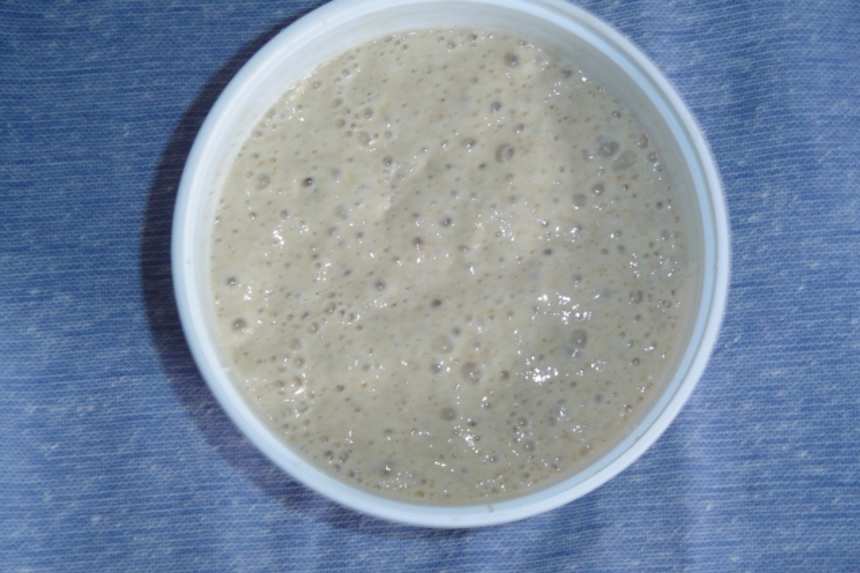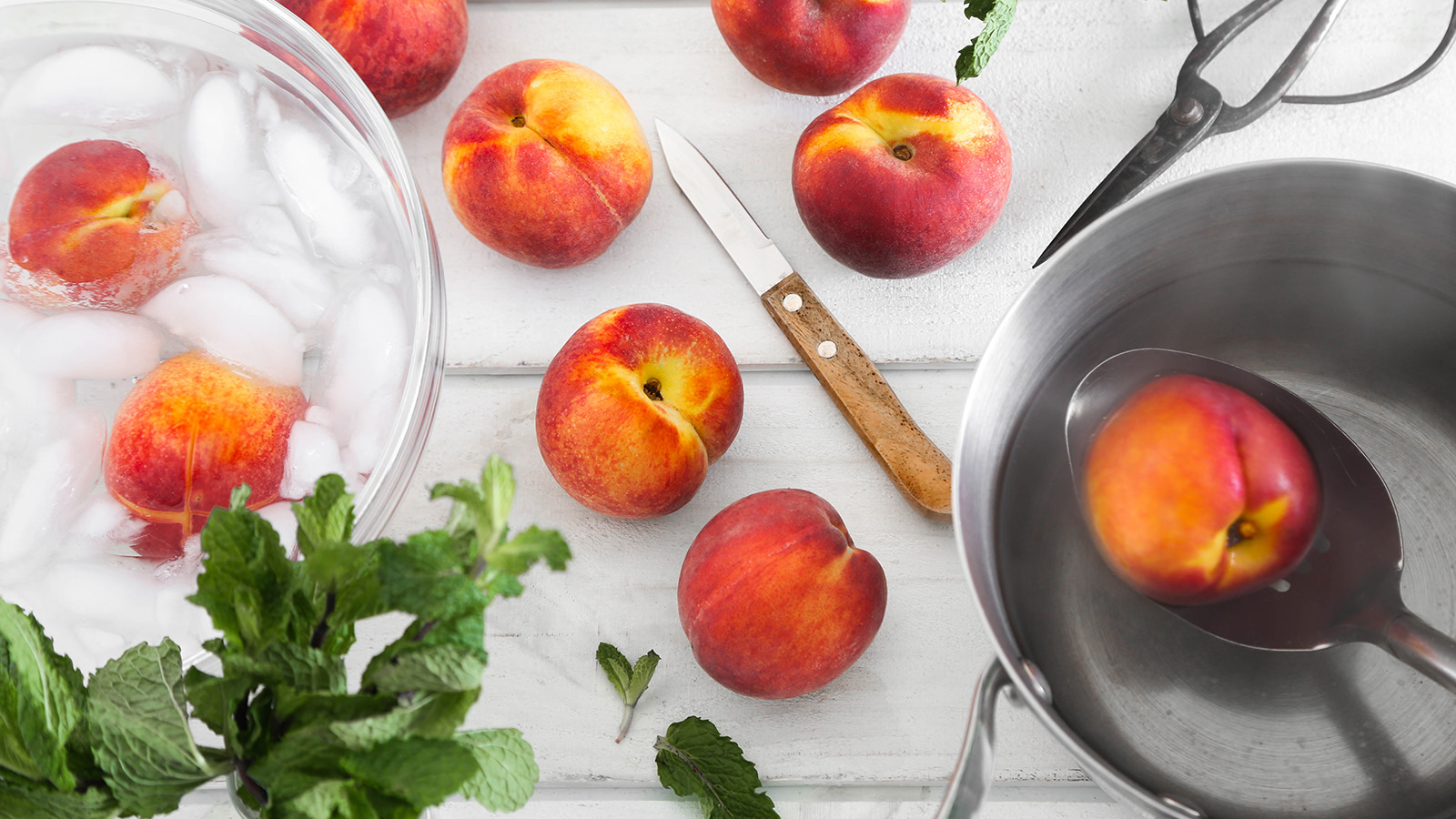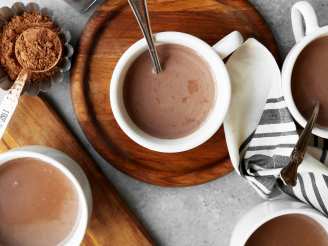Wild Yeast Sourdough Starter

photo by Donna M.

- Ready In:
- 120hrs 10mins
- Ingredients:
- 5
- Yields:
-
1 Starter
ingredients
- 1⁄2 cup unsweetened pineapple juice
- 1⁄2 cup whole grain wheat flour or 1/2 cup whole grain rye flour
- 1 cup unbleached all-purpose flour
- 2 cups water (bottled or purified)
- 1⁄4 teaspoon cider vinegar (optional)
directions
- I bought whole wheat berries at the health food store and ground my own flour in a coffee grinder from them because I wanted the yeast on the flour to be really fresh, but this probably isn't really necessary. The pre-ground flour at the health food store is probably quite fresh, also, and you can buy very small quantities in bulk.
- DAY ONE: Mix 2 Tablespoons whole grain flour and 2 Tablespoons pineapple juice. Stir well, cover and let sit for 24 hours at room temperature.
- DAY TWO: Add 2 Tablespoons whole grain flour and 2 Tablespoons pineapple juice. Stir well, cover and let sit another 24 hours at room temperature. You may, or may not start to see small bubbles at this point.
- DAY THREE: Add 2 Tablespoons whole grain flour and 2 Tablespoons pineapple juice. Stir well and let sit 24 hours at room temperature.
- DAY FOUR: Stir mixture and measure out 1/4 cup--discard the rest. To the 1/4 cup, stir in 1/4 cup unbleached AP flour and 1/4 cup water. Let sit 24 hours at room temperature.
- REPEAT Day Four until mixture expands to double its size and smells yeasty. Mixture may start to bubble after a couple of days and then go flat and look totally dead for a couple more days. If this happens, at about Day 6 add the 1/4 teaspoons vinegar with your daily feeding. This will lower the PH and wake up the yeast, which will then start to grow.
- Once the yeast starts growing, starter should be fed equal parts of flour and water in a quantity sufficient to make enough starter for your recipe. Store the starter in the refrigerator when you are not using it. It needs to be fed equal parts flour and water once a week to keep it alive. Either use or discard at least half of it when feeding--THIS IS VERY IMPORTANT to maintian a healthy starter! If you forget to feed it for a few weeks, it probably will be fine but may take several feedings to get it back up to par.
Questions & Replies
-
hi, my starter is still very loose after about 2 weeks. I take out a cup of the mix and replace it everyday with a cup of flour and water. what am i doing wrong? I have made pizza dough with it and it turns out great. I started the sour dough bread process yesterday but the dough is still really sticky and has not risen very much. Should i add more flour? How long do i wait to see if the dough will rise?
-
Want to start making sourdough bread for two reasons, 1) my husband is getting heartburn from the homemade yeast bread I have been making, and 2) yeast is really hard to find right now! Sadly all I can get my hands on during this pandemic is AP flour to make a starter with. Will it still work or will I be wasting flour that I cannot afford to waste?
-
I'm on Day 6 of making this starter. I'm due to feed it tonight with 1/3 cup Bread Flour and 1/3 cup water and of course, only using 1/3 cup of the "old" starter. Before I feed, the starter is very thin. Is that normal? It smells nice and "yeasty" however. Do I just keep doing this same thing for however many days it takes to become very bubbly and thicker? I'm not sure when it's ready to start using. And when I make my Artisan Bread in the Cast iron pot, how much starter do I use? Before discovering the fantastic properties of using Wild Yeast Sourdough Starter, I was using 1/4 teaspoon of store-bought Yeast. Thanks so much! Phyllis
see 1 more questions
Reviews
-
I would get mold on the 3rd day, like some other reviewers are saying. On the 3rd attempt, I started stirring the starter a lot more, at least twice a day counting stirring it whenever I fed it. Then it finally worked. I think stirring it might kill the mold when it starts to form on top. I also put it in a fresh Mason jar every time I fed it, so mold didn't have a chance to form up on the sides of the jar.
-
This is day 3 and is full of 1/2 inch long mold. Smells wonderful but I know that mold is bad. I followed the directions. Cleaned the jar with boiling water. Our area has high molds that float in the air, maybe this has something to do with the mold on my starter. The starter sure was dry the 2 days before. I am wondering if I could have added more pineapple juice then called for? Sorry, but I will give it one more try. YaYa
see 12 more reviews
RECIPE SUBMITTED BY
Donna M.
Billings, Montana




